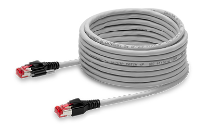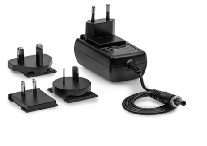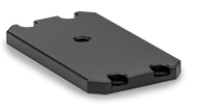|
||||||||||||||||||||||||||||||||||||||||||
|
||||||||||||||||||||||||||||||||||||||||||
iDS NXT Ocean: A simplified Artificial Intelligence workflow experience
Back
to Newsletter
Go to iDS NXT Ocean Product Page
Go
to iDS Cameras
Go to High-resolution Colour Cameras
Go to High-resolution Monochrome Cameras
Go to GigE Cameras
 |
|
iDS NXT
Ocean editorial first of four: How to grab images for the IDS NXT
ocean AI workflow
|
|
|
Throughout this four part series,
we will take you through the steps to implement your own AI based
image processing with the all in-one-solution: iDS NXT Ocean.
The four basic steps to your AI solution are: grab,
label, train and run AI. |
|
|
To "grab"
is to acquire images and then upload these images to our web-based
service called NXT Lighthouse. In the next editorials we will discuss
how you can assign labels and annotations to the image data for
both classification and object detection tasks. We will then discuss
how to train the neural networks and once this is complete, we will
take the neural networks and then upload them to the NXT camera
and run an AI inference.
Grab Data |
|
|
|
|
|
In order to grab images the NXT Cockpit application connects to the camera and logs in. NXT Cockpit allows the operator to monitor a number of system parameters and can be used to remotely log-in to the camera over a network with its web-service. |
|
|
The configuration page gives access to all system parameters including sensor configuration, network set-up, user access control, set up for external interfaces, management of the vision apps installed on the NXT. The Logbook page logs system information while running. |
|
|
The VApp manager gives access to the Crawler VApp which when set-up links the image data from the camera to a folder on the host PC for seamless and automatic transfers over the network connection. |
|
|
The camera section within the crawler vision app gives access to the live image so that it can be focussed and optimised. The camera can be set to free run or if the system is to run on a conveyor belt the camera can be set-up to take an input trigger. |
|
|
|
|
|
The best results are achieved when there is variability in the dataset - range of objects, background, image brightness, lighting etc. Additionally, we should also aim to have a similar number of images in each class. A good rule of thumb is 50 images per class for simple applications and 100s per class for complex applications. Furthermore, it's also a good idea to start small with just a few 10s of images in order to identify whether Deep Learning is the right approach. |
|
|
The system is now ready for stage 2 where we train the dataset to classify or detect our objects. |
|
| What the iDS NXT Ocean kit includes | |
|
|
With the Sony global shutter CMOS sensor the camera is suitable for customers with high demands on image quality, dynamic range and sensitivity. It provides a resolution of 1.6 MP at 3.45 µm pixel size. The iDS NXT Rio GS29016 is available in monochrome or colour.
|
|
|
|
|
The iDS NXT
Lighthouse cloud software allows those without expertise in the
area of artificial intelligence or camera programming to train an
AI classifier with their own image data. As a web application, the
necessary means to create the neural network are immediately available,
meaning you wont have to initially set up your own development environment.
Subsequently you can start on your neural network straight away. Image processing can take place entirely or partially on the camera FPGA, this reduces bandwidth and computing load.
|
|
| The iDS NXT Ocean kit also includes: | |||
|
High quality lens
|
Gigabit Ethernet Cable
|
Camera power supply with necessary adapters
|
Camera tripod adapter
|
|
Specifications
|
iDS
NXT Rio GS29016
|
||
|
Sensor
Type
|
CMOS
Colour
|
||
|
Shutter
|
Global
Shutter
|
||
|
Sensor
characteristic
|
Linear
|
||
|
Resolution
|
1456
x 1088 Pixel
|
||
|
Pixel
Size
|
3.45
x 3.45 um
|
||
| Need
a price or more application information? Please
email Adept Turnkey or call our offices Adept Turnkey Pty Ltd is "The Machine Vision and Imaging Specialists" and distributor of iDS products in Australia and New Zealand. To find out more about any iDS product, please call Adept Turnkey at Perth (08) 9242 5411 / Sydney (02) 9905 5551 / Melbourne (03) 9384 1775 or contact us online. |
|||
|
If you like this page, please recommend and share it. |
|||
| More | |||







